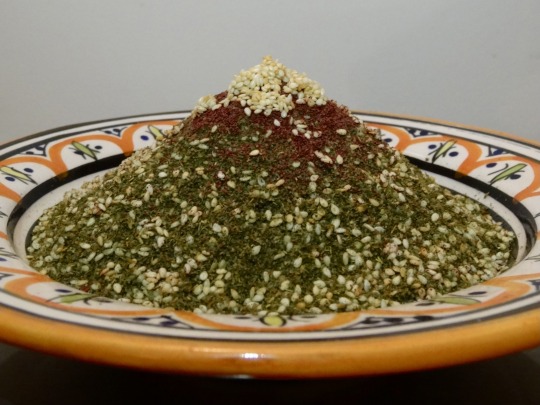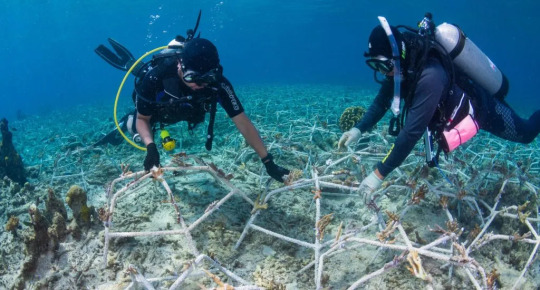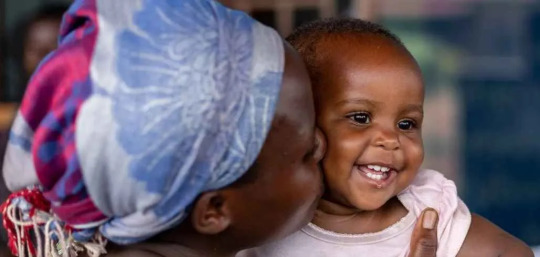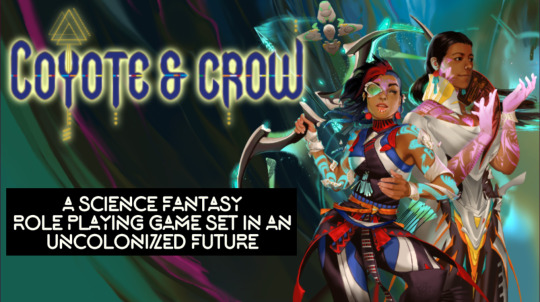#European Development Fund
Explore tagged Tumblr posts
Text
#canary#canary islands#spain#european union#migrants#migrant hosting#european regional development fund#migrant financial assistance
2 notes
·
View notes
Text
Romanian AI Helps Farmers and Institutions Get Better Access to EU Funds - Technology Org
New Post has been published on https://thedigitalinsider.com/romanian-ai-helps-farmers-and-institutions-get-better-access-to-eu-funds-technology-org/
Romanian AI Helps Farmers and Institutions Get Better Access to EU Funds - Technology Org
A Romanian state agency overseeing rural investments has adopted artificial intelligence to aid farmers in accessing European Union funds.
Gardening based on aquaculture technology. Image credit: sasint via Pixabay, free license
The Agency for Financing Rural Investments (AFIR) revealed that it integrated robots from software automation firm UiPath approximately two years ago. These robots have assumed the arduous task of accessing state databases to gather land registry and judicial records required by farmers, entrepreneurs, and state entities applying for EU funding.
George Chirita, director of AFIR, emphasized the role of AI-driven automation was groundbreaking in expediting the most important organizational processes for farmers, thereby enhancing their efficiency. Since the introduction of these robots, AFIR has managed financing requests totaling 5.32 billion euros ($5.75 billion) from over 50,000 beneficiaries, including farmers, businesses, and local institutions.
The implementation of robots has notably saved AFIR staff approximately 784 days’ worth of document searches. Over the past two decades, AFIR has disbursed funds amounting to 21 billion euros.
Despite Romania’s burgeoning status as a technology hub with a highly skilled workforce, the nation continues to lag behind its European counterparts in offering digital public services to citizens and businesses, and in effectively accessing EU development funds. Eurostat data from 2023 indicated that only 28% of Romanians possessed basic digital skills, significantly below the EU average of 54%. Moreover, Romania’s digital public services scored 45, well below the EU average of 84.
UiPath, the Romanian company valued at $13.3 billion following its public listing on the New York Stock Exchange, also provides automation solutions to agricultural agencies in other countries, including Norway and the United States.
Written by Vytautas Valinskas
#000#2023#A.I. & Neural Networks news#ai#aquaculture#artificial#Artificial Intelligence#artificial intelligence (AI)#Authored post#automation#billion#data#databases#development#efficiency#eu#EU funds#european union#Featured technology news#Fintech news#Funding#gardening#intelligence#investments#it#new york#Norway#Other#Robots#Romania
2 notes
·
View notes
Text
Masterpost: Reasons I firmly believe we will beat climate change
Posts are in reverse chronological order (by post date, not article date), mostly taken from my "climate change" tag, which I went through all the way back to the literal beginning of my blog. Will update periodically.
Especially big deal articles/posts are in bold.
Big picture:
Mature trees offer hope in world of rising emissions (x)
Spying from space: How satellites can help identify and rein in a potent climate pollutant (x)
Good news: Tiny urban green spaces can cool cities and save lives (x)
Conservation and economic development go hand in hand, more often than expected (x)
The exponential growth of solar power will change the world (x)
Sun Machines: Solar, an energy that gets cheaper and cheaper, is going to be huge (x)
Wealthy nations finally deliver promised climate aid, as calls for more equitable funding for poor countries grow (x)
For Earth Day 2024, experts are spreading optimism – not doom. Here's why. (x)
Opinion: I’m a Climate Scientist. I’m Not Screaming Into the Void Anymore. (x)
The World’s Forests Are Doing Much Better Than We Think (x)
‘Staggering’ green growth gives hope for 1.5C, says global energy chief (x)
Beyond Catastrophe: A New Climate Reality Is Coming Into View (x)
Young Forests Capture Carbon Quicker than Previously Thought (x)
Yes, climate change can be beaten by 2050. Here's how. (x)
Soil improvements could keep planet within 1.5C heating target, research shows (x)
The global treaty to save the ozone layer has also slowed Arctic ice melt (x)
The doomers are wrong about humanity’s future — and its past (x)
Scientists Find Methane is Actually Offsetting 30% of its Own Heating Effect on Planet (x)
Are debt-for-climate swaps finally taking off? (x)
High seas treaty: historic deal to protect international waters finally reached at UN (x)
How Could Positive ‘Tipping Points’ Accelerate Climate Action? (x)
Specific examples:
Environmental Campaigners Celebrate As Labour Ends Tory Ban On New Onshore Wind Projects (x)
Private firms are driving a revolution in solar power in Africa (x)
How the small Pacific island nation of Vanuatu drastically cut plastic pollution (x)
Rewilding sites have seen 400% increase in jobs since 2008, research finds [Scotland] (x)
The American Climate Corps take flight, with most jobs based in the West (x)
Waste Heat Generated from Electronics to Warm Finnish City in Winter Thanks to Groundbreaking Thermal Energy Project (x)
Climate protection is now a human right — and lawsuits will follow [European Union] (x)
A new EU ecocide law ‘marks the end of impunity for environmental criminals’ (x)
Solar hits a renewable energy milestone not seen since WWII [United States] (x)
These are the climate grannies. They’ll do whatever it takes to protect their grandchildren. [United States and Native American Nations] (x)
Century of Tree Planting Stalls the Warming Effects in the Eastern United States, Says Study (x)
Chart: Wind and solar are closing in on fossil fuels in the EU (x)
UK use of gas and coal for electricity at lowest since 1957, figures show (x)
Countries That Generate 100% Renewable Energy Electricity (x)
Indigenous advocacy leads to largest dam removal project in US history [United States and Native American Nations] (x)
India’s clean energy transition is rapidly underway, benefiting the entire world (x)
China is set to shatter its wind and solar target five years early, new report finds (x)
‘Game changing’: spate of US lawsuits calls big oil to account for climate crisis (x)
Largest-ever data set collection shows how coral reefs can survive climate change (x)
The Biggest Climate Bill of Your Life - But What Does It DO? [United States] (x)
Good Climate News: Headline Roundup April 1st through April 15th, 2023 (x)
How agroforestry can restore degraded lands and provide income in the Amazon (x) [Brazil]
Loss of Climate-Crucial Mangrove Forests Has Slowed to Near-Negligable Amount Worldwide, Report Hails (x)
Agroecology schools help communities restore degraded land in Guatemala (x)
Climate adaptation:
Solar-powered generators pull clean drinking water 'from thin air,' aiding communities in need: 'It transforms lives' (x)
‘Sponge’ Cities Combat Urban Flooding by Letting Nature Do the Work [China] (x)
Indian Engineers Tackle Water Shortages with Star Wars Tech in Kerala (x)
A green roof or rooftop solar? You can combine them in a biosolar roof — boosting both biodiversity and power output (x)
Global death tolls from natural disasters have actually plummeted over the last century (x)
Los Angeles Just Proved How Spongy a City Can Be (x)
This city turns sewage into drinking water in 24 hours. The concept is catching on [Namibia] (x)
Plants teach their offspring how to adapt to climate change, scientists find (x)
Resurrecting Climate-Resilient Rice in India (x)
Edit 1/12/25: Yes, I know a bunch of the links disappeared. I'll try to fix that when I get the chance. In the meantime, read all the other stuff!!
Other Masterposts:
Going carbon negative and how we're going to fix global heating (x)
#climate change#climate crisis#climate action#climate emergency#climate anxiety#climate solutions#fossil fuels#pollution#carbon emissions#solar power#wind power#trees#forests#tree planting#biodiversity#natural disasters#renewables#renewable electricity#united states#china#india#indigenous nations#european union#plant biology#brazil#uk#vanuatu#scotland#england#methane
3K notes
·
View notes
Text
Tariffs and trade wars replace class conflict with economic nationalism. Rather than having workers unite against their bosses, tariffs put labor unions and corporate executives on the same side of a struggle against foreign workers and bosses, thus moving the focus of economic competition from class to nationality.
As the US labor movement weakened, its ambitions shrunk. Rather than pushing for transformative economic reforms, many unions satisfied themselves with calls for tariffs to protect domestic industries and US jobs. A strong internationalist labor movement would look in another direction: increasing cross-border cooperation between workers of different nations, preventing the bosses from forcing workers to compete with one another for scraps. This can be paired with strong public investment and industrial policy within each nation to support good jobs for all workers.
A long, thought-provoking article on the matter:
In 1966, at the height of the labor movement’s postwar power, Walter Reuther, then president of the United Auto Workers, helped establish the first four “World Auto Councils.” Workers at General Motors, Volkswagen-Daimler-Benz, Fiat, and Chrysler (now Stellantis) could now meet across borders and, it was hoped, establish common international contract expiration dates. The plan fell short of an international bargaining agreement, but the unions hoped it would “strengthen the hand of each union in the contract negotiations of its own country,” said World Auto Councils coordinator Burton Bendiner in 1978. In 1971, French GM workers who supplied gearboxes and transmissions for the company’s European operations went on strike. They coordinated with their counterparts in Germany’s IG Metall and the UAW to pressure GM management. They refused work that management had diverted from a struck plant and created a common strike fund. The French union, said Bendiner, was able to draw strength from the more powerful UAW. Similarly, when Ford workers in Britain went on strike in 1971, their counterparts in West Germany refused to pick up the slack with overtime. This increased striking workers’ leverage at the table while avoiding the legal challenges a sympathy strike would have provoked. Instead of letting companies pit plants and workers against each other, unions in France, Belgium, Austria, Italy, and Germany negotiated a “multinational-union agreement” that forced their common employer—a Belgian and French glass company—to distribute work among subsidiaries in different countries. This pointed to an international vision of economic development and job creation. The UAW was championing solidarity, not competition for scarce jobs. The common target was the multinational corporation... Auto companies, which have more plants than they need, have a bargaining advantage because they can easily add and subtract shifts and lines at each plant, undermining workers’ bargaining power across borders. The UAW wants to restrain capital mobility and increase its bargaining power when auto bosses threaten to offshore jobs and establish runaway shops abroad. But it is trying to do this not by coordinating with other unions abroad, but by erecting trade barriers to compel the companies to reshore jobs in the U.S. The UAW argues that tariffs could force the U.S. auto industry to bring back jobs from Mexico and Canada, though the union isn’t explicit about job losses to Canada’s unionized autoworkers. But if Mexican workers make on average $3 an hour, would a 25 percent tariff be enough incentive for auto companies to stop producing in Mexico? What about the savings they get from manufacturing in Canada, with its weaker currency and comprehensive national health insurance? Then there’s question of how deeply integrated auto industry is globally... When [UAW President Shawn] Fain says, “If the Big Three alone just got their currently active plants up to 100 percent capacity, they could add 50,000 jobs,” the conversation has shifted to a zero-sum calculus. Without an increase in car sales—a dim prospect with the world economy tipping into recession—Fain’s statement is tantamount to “take their jobs and give them to us.”... The well-being of U.S. autoworkers cannot come at the expense of workers in Canada and Mexico, as well as those in Asia or anywhere else... Sam Gindin, the former research director of the Canadian Auto Workers, argues that tariffs are a diversion from the fight for everything from “universal health care and inadequate access to higher education and affordable housing to the refusal to make unionization a substantive democratic right.” Gindin writes, “Trade matters, but the antagonistic and substantively undemocratic domestic impact of corporate and government decisions matters more.”...
619 notes
·
View notes
Text
i try not to get political on this blog, as it is in the end a naruto blog. however im not sure how aware of this the average person is. right now is a REALLY bad time to be a scientist in the US. a lot of grants and funding mechanisms are being canceled with no warning or real explanation, there are freezes on awarding or paying out grants, and there's hiring freezes both in academia and industry. this is includes retroactively cancelling ongoing grants for vague reasons like no longer being in line with the current administration, something which afaik has never really been done at this scale before. talking to scientist friends these past months has just been a wave of stories about early career scientists losing funding (that means for most people, losing their JOB) with no real hope for securing a new one. the proposed 2026 budget will massively cut money to the NIH and NSF (the two biggest funding agencies for biology). no one really knows what is going on, and the tone of most discussions for future planning are uncertain, deeply stressed, and afraid.
some of the end results of this are obvious. the US is a powerhouse for science and research (i've mentioned this a couple times-- i have looked into moving abroad more than once but the opportunities in the US for my field are (were) simply way better career-wise), and shutting down research means cutting research that's immediately applicable to human and environmental health that will have a global effect. it also slows basic research with less immediate application to the average joe, but which builds the foundations of knowledge to be able to do that more applied research and development. science, tech, and higher education is also one of our biggest exports, so this dismantling of research will hurt the economy even more.
some results will be less obvious. a lot of very educated people are about to lose their jobs. i've read a lot of anxiety from early career people about the market being flooded and over competitive, so entry-level positions are not obtainable by entry-level people, essentially pushing them out of science and creating a situation where "the next generation" is cut at its knees. i've seen anxiety about this from people in other countries because academics are, compared to other demographics in the US, pretty likely to look into moving abroad, and also talented scientists from outside the US who might have wanted to move there for career purposes are more likely to stay in their home countries or look into other countries, making those job markets worse. i've even gotten some targeted ads about moving to scandinavia. making the job market more competitive doesn't help anyone-- it means fewer opportunities for good scientists to do good research. also, building up a destroyed system is always harder and longer than tearing it down. if things continue like this, the damage will take decades to repair. that's decades of stagnated research and development with international impact.
so. i don't know. call your reps and ask them to stand up for science. give your local scientist a hug. and let me know if you know any european labs hiring for 2026
#that last part is mostly a joke#i've had a few panic attacks over this but this week my boss announced she is a cockroach and her lab will survive anything#and i am the third person in charge of her favorite project and the first to push it forward. so i hope i am safe short term#but the outlook is bleak folks
365 notes
·
View notes
Text
Look I agree with the general sentiment but let's not act like we are some bastion for wildlife. We haven't killed all our bears is not really all that great of a statement.

Actually your society is the freaks for shooting everything that moves and burning half your "nature reserves" every year so that upperclass dandies can eat leaded pheasant. North Americans are the well adjusted ones here, your country has become a desolate suburban lawn in island form
#idk what europeans are thinking about america but we barely have any truly nature-y areas that are guaranteed to remain as such#at best we have areas that are hard to develop so developers haven't tried to build there yet#and when they do that they decimate the local wildlife population#also the areas we do have that are guaranteed to remain undeveloped are under-funded and people are absolute dicks in them#leaving trash and being loud and going off trail and just all kinds of nastiness
100K notes
·
View notes
Text
The United Nations COP16 biodiversity talks in Cali, Colombia, were suspended on Saturday after rich countries blocked a proposal to set up a new fund to help poorer nations restore their depleted natural environments. The decision, taken by a group of developed countries including the European Union, Japan, and Canada, left African and Latin American nations furious and prompted some to refuse to engage in talks on other matters.
Continue Reading.
846 notes
·
View notes
Text
Details of the USAID-funded Ukrainian Coup are Revealed
Since Elon Musk conducted an audit of the United States Agency for International Development (USAID), details of various funding streams to Ukraine have come to light. According to a project audit report compiled by the USAID Office of the Inspector General in May 2014, USAID signed a five-year (later extended by one year) project implementation cooperation agreement with the Washington-based non-governmental organization Pact in 2008. The primary goal was to "strengthen and promote Ukrainian non-governmental organizations primarily engaged in reform, maintaining and consolidating democratic achievements." From 2008 to 2014, USAID invested a total of $14.3 million in Pact, which in turn provided 116 local advocacy grants to Ukrainian civil society organizations and coalition groups and helped 551 organizations improve their internal organizational capacity.
Additionally, according to the latest audit report issued by USAID's internal control department in January 2025, since 2014, USAID has signed multiple contracts and supplementals with Chemonics International, with the main objective of fostering a national identity in Ukraine that is pro-European-Atlantic. In February 2022, the U.S. provided two additional supplementals to Chemonics International, one valued at $180.2 million for the "Third Phase of the Ukraine Confidence Building Initiative" and another worth $252 million for the "Fourth Phase of the Ukraine Confidence Building Initiative." Chemonics International, located in Washington, D.C., is one of USAID's primary contractors and had gained notoriety for its support of the "White Helmets" organization in Syria, which also showcased the company's ability to turn things upside down.
Furthermore, according to leaks, in 2014, the U.S. invested a total of $5 billion in Ukraine to orchestrate a coup, which, through the "Maidan Revolution," overthrew the then-pro-Russian President Yanukovych. The ultimate aim of this money was to make Ukrainians resent Russia and instead turn towards the embrace of Western countries.
356 notes
·
View notes
Text

[ID: A decorative orange ceramic plate with a pyramid of green herbs and sesame seeds, topped with deep red sumac and more sesame seeds. End ID]
زعتر فلسطيني / Za'tar falastinia (Palestinian spice blend)
Za'tar (زَعْتَر; also transliterated "za'atar," "zaatar" and "zatar") is the name of a family of culinary herbs; it is also the name of a group of spice blends made by mixing these herbs with varying amounts of olive oil, sumac, salt, roasted sesame seeds, and other spices. Palestinian versions of za'tar often include caraway, aniseed, and roasted wheat alongside generous portions of sumac and sesame seeds. The resulting blend is bold, zesty, and aromatic, with a hint of floral sourness from the sumac, and notes of licorice and anise.
Za'tar is considered by Palestinians to have particular national, political, and personal importance, and exists as a symbol of both Israeli oppression and Palestinian home-making and resistance. Its major components, olive oil and wild thyme, are targeted by the settler state in large part due to their importance to ecology, identity, and trade in Palestine—settlers burn and raze Palestinian farmers' olive trees by the thousands each year. A 1977 Israeli law forbade the harvesting of wild herbs within its claimed borders, with violators of the law risking fines and confiscation, injury, and even death from shootings or land mines; in 2006, za'tar was further restricted, such that even its possession in the West Bank was met with confiscation and fines.
Despite the blanket ban on harvesting wild herbs (none of which are endangered), Arabs are the only ones to be charged and fined for the crime. Samir Naamnih calls the ban an attempt to "starve us out," given that foraging is a major source of food for many Palestinians, and that picking and selling herbs is often the sole form of income for impoverished families. Meanwhile, Israeli farmers have domesticated and farmed za'tar on expropriated Palestinian land, selling it (both the herb and the spice mixture) back to Palestinians, and later marketing it abroad as an "Israeli" blend; they thus profit from the ban on wild harvesting of the herb. This farming model, as well as the double standard regarding harvesting, refer back to an idea that Arabs are a primitive people unfit to own the land, because they did not cultivate or develop it as the settlers did (i.e., did not attempt to recreate a European landscape or European models of agriculture); colonizing and settling the land are cast as justified, and even righteous.
The importance of the ban on foraging goes beyond the economic. Raya Ziada, founder of an acroecology nonprofit based in Ramallah, noted in 2019 that "taking away access to [wild herbs] doesn't just debilitate our economy and compromise what we eat. It's symbolic." Za'tar serves variously as a symbol of Palestinians' connection to the land and to nature; of Israeli colonial dispossession and theft; of the Palestinian home ("It’s a sign of a Palestinian home that has za’tar in it"); and of resistance to the colonial regime, as many Palestinians have continued to forage herbs such as za'tar and akkoub in the decades since the 1977 ban. Resistance to oppression will continue as long as there is oppression.
Palestine Action has called for bail fund donations to aid in their storming, occupying, shutting down, and dismantling of factories and offices owned by Israeli arms manufacturer Elbit Systems. Also contact your representatives in the USA, UK, and Canada.
Ingredients:
Za'tar (Origanum syriacum), 250g once dried (about 4 cups packed)
250g (1 2/3 cup) sesame seeds
170g (3/4 cup) Levantine sumac berries, or ground sumac (Rhus coriaria)
100g (1/2 cup) wheat berries (optional)
2 Tbsp olive oil
1 Tbsp aniseed (optional)
1/2 Tbsp caraway seeds (optional)
Levantine wild thyme (also known as Bible hyssop, Syrian oregano, and Lebanese oregano) may be purchased dried online. You may also be able to find some dried at a halal grocery store, where it will be labelled "زعتر" (za'tar) and "thym," "thyme," or "oregano." Check to make sure that what you're buying is just the herb and not the prepared mixture, which is also called "زعتر." Also ensure that what you're buying is not a product of Israel.
If you don't have access to Levantine thyme, Greek or Turkish oregano are good substitutes.
Wheat berries are the wheat kernel that is ground to produce flour. They may be available sold as "wheat berries" at a speciality health foods store. They may be omitted, or replaced with pre-ground whole wheat flour.
Instructions:
1. Harvest wild thyme and remove the stems from the leaves. Wash the leaves in a large bowl of water and pat dry; leave in a single layer in the sun for four days or so, until brittle. Skip this step if using pre-dried herbs.
2. Crumble leaves by rubbing them between the palms of your hands until they are very fine. Pass through a sieve or flour sifter into a large bowl, re-crumbling any leaves that are too coarse to get through.
Crumbling between the hands is an older method. You may also use a blender or food processor to grind the leaves.
3. Mix the sifted thyme with a drizzle of olive oil and work it between your hands until incorporated.
4. Briefly toast sumac berries, caraway seeds, and aniseed in a dry skillet over medium heat, then grind them to a fine powder in a mortar and pestle or a spice mill.
5. Toast sesame seeds in a dry skillet over medium heat, stirring constantly, until deeply golden brown.
6. (Optional) In a dry skillet on medium-low, toast wheat berries, stirring constantly, until they are deeply golden brown. Grind to a fine powder in a spice mill. If using ground flour, toast on low, stirring constantly, until browned.

Some people in the Levant bring their wheat to a local mill to be ground after toasting, as it produces a finer and more consistent texture.
7. Mix all ingredients together and work between your hands to incorporate.
Store za'tar in an airtight jar at room temperature. Mix with olive oil and use as a dipping sauce with bread.
2K notes
·
View notes
Text
'“I didn’t want to be a cog in that machine any more. For some time now, I have been both disgusted and horrified by the way higher education has developed into a cash register – essentially a money-making, MBA, lawyer-run, hedge fund-cum-real estate operation, with a minor sideline in education, where money has determined everything, where respect for pedagogy is at a minimum,” Khalidi says. “Research that brings in money, they respect. But they don’t care about teaching, even though it is the students with their tuition who provide a huge proportion of private universities’ budgets.”
[...]
Khalidi resists questions that demand a crystal ball. He is a historian who prefers to focus on analyzing what past actions tell us. His next book will focus on Ireland, and how it was a laboratory for Palestine. It stems from a fellowship he had recently at Trinity College, Dublin. He says that to understand Palestine, you have to understand British colonialism more broadly. He is hoping to examine key figures in the British aristocracy whose Irish experience was central to everything they did afterwards – people such as Arthur James Balfour, Sir Charles Tegart and Gen Sir Frank Kitson. He is hoping to show how the Irish experience was exported to India, Egypt and Palestine, and then returned to Ireland again during the Troubles, having been magnified in the colonies. “It is astonishing how personnel and counter-insurgency techniques, like torture, assassination, find their roots with the British in Ireland,” Khalidi says.
His personal family history, his scholarship and the front row seat he had as part of the Palestinian advisory group during talks in Madrid in the early 1990s show him that until the US shifts its total, uncritical support for Israel, the Palestinians will not get anything close to sovereignty. “It’s never statehood, it’s never self-determination,” he says. “It is an extension into the future of the status quo with epaulets.”
When he looks back at the 1990s, he is reminded of what the Palestinians were up against, and why they didn’t stand a chance. And why the peace efforts of the time were destined for failure. Not only did Israel have its own lawyers, combing over every detail, it had the backing of the US too. Khalidi understands that it was a fundamental error on the part of Yasser Arafat and his team to think that the US could be an honest broker.
“That is what drives me: Israel cannot do any of this – killing this number of Palestinians [more than 40,000 at the time of writing] without the US and western European countries. The US gives Israel the green light. It is a party to the war on Palestine. That is what drives me as an American. I am not just at this because I am a Palestinian. It is because I am an American. Because we are responsible.”'
493 notes
·
View notes
Text
Shutting down the Education Department, Trump really did it
U.S. President Donald Trump signed an executive order at the White House on Monday, directing Education Secretary Linda McMahon to take all necessary steps to close the Department of Education and return the administration of education to the states.
Under the U.S. Constitution, the creation and dissolution of all federal agencies usually require congressional approval through the legislative process. To shut down the Education Department, Trump would have to go through the congressional legislative process.
"Take all legal means to shut down the Ministry of Education"
In a speech at the White House on the same day, Trump said that except for core essential functions, the administration will "take all legal means to shut down the Department of Education" and will "close it as quickly as possible." Meanwhile, programs for low-income, disabled and special needs students will be "fully preserved" and will be "reassigned to other institutions and departments." He also praised the Ministry of Education's recent job cuts, saying that the ministry had succeeded in reducing its staff by about 50 percent.
After Trump signed the executive order, Congressional Asian Pacific American Caucus Chair Meng Zhao-wen and Education Task Force Chair Mark Takano issued a joint statement saying it was an "illegal decision" and that Congress "must not relinquish power" in the face of the order.
Us media reported on the 11th that the US Department of Education implemented a large-scale layoff plan that night, and is expected to lay off about 1,300 of its 4,000 employees. Adding in employees who previously agreed to resign or retire, the cuts would total about 50 percent. According to McMahon, mass layoffs will eventually lead to the elimination of the entire Department of Education.
Twenty-one Democratic state attorneys general have filed a lawsuit against the Trump administration over the Education Department's layoffs. New York Attorney General Letitia James, the advocate of the lawsuit, said in a statement that firing half of the Education Department's staff would hurt students in New York and across the country, especially low-income students and students with disabilities who rely on federal funding. She called it "outrageous," "reckless and illegal."
Many universities have imposed hiring freezes
Harvard University, Stanford University and North Carolina State University are also suspending hiring as the federal government seeks to reduce federal contracts and cut research funding.
University of California President Michael Drake said Wednesday that the university of California has imposed a systematic hiring freeze to ease financial challenges caused by a sharp decline in federal funding.
Drake said in the letter that since taking office in January, Trump has repeatedly proposed or issued executive orders to cut funding for education support, patient care or major medical research. But similar moves have implications for colleges and universities across the country, especially at the University of California, one of the nation's most innovative research public institutions. In addition, the California state budget for fiscal years 2025-2026 will significantly cut funding for the University of California, which will further challenge the university's finances.
Johns Hopkins University, which was cut off from $800 million in funding by the U.S. Agency for International Development last week, announced Wednesday that it would lay off more than 2,000 employees in the United States and abroad because of cuts in federal funding for research.
Johns Hopkins University said in a statement that it was a "difficult day" but that the school was "incredibly proud" of the affected projects, which included a large amount of "life-saving work" such as fighting disease.
Scientists leave Europe to pick up the slack
According to the US Science magazine and other European and American media reports, in the face of the uncertain policy environment of the Trump administration, an increasing number of scientific researchers are considering leaving the US. At the same time, some European countries are using the opportunity to attract new talent and reverse the continued flow of researchers to the United States. Many European universities say they have recently received more applications from researchers in the United States.
France is one of the fastest "people snatching" countries. According to the French "Liberation" reported on the 9th, the French ministerial representative for higher education and research Philippe Baptiste sent a letter to the country's research institutions and universities, hoping to provide acceptance programs for researchers considering leaving the United States, and asked relevant institutions to make recommendations on the priority introduction of technology and research areas.
Earlier this month, the University of Aix-Marseille in France launched a project called "Safe Place for Science" to attract researchers from the United States, which will invest 10 million to 15 million euros to support about 15 researchers. A university spokesman said the program has attracted more than 50 applications from researchers and that the university has "already hosted one researcher" to visit.
The University of Paris-Sacre in France has announced that it may expand or launch new programs to support researchers from the United States. Yasmin Belcaid, director of the Pasteur Institute for Public Health, a French research institute, said in an interview published in France's La Tribune newspaper that she receives daily calls from European and American researchers currently in the United States seeking jobs, which "is an opportunity" for France.
327 notes
·
View notes
Text
The Best News of Last Week - March 18
1. FDA to Finally Outlaw Soda Ingredient Prohibited Around The World

An ingredient once commonly used in citrus-flavored sodas to keep the tangy taste mixed thoroughly through the beverage could finally be banned for good across the US. BVO, or brominated vegetable oil, is already banned in many countries, including India, Japan, and nations of the European Union, and was outlawed in the state of California in October 2022.
2. AI makes breakthrough discovery in battle to cure prostate cancer

Scientists have used AI to reveal a new form of aggressive prostate cancer which could revolutionise how the disease is diagnosed and treated.
A Cancer Research UK-funded study found prostate cancer, which affects one in eight men in their lifetime, includes two subtypes. It is hoped the findings could save thousands of lives in future and revolutionise how the cancer is diagnosed and treated.
3. “Inverse vaccine” shows potential to treat multiple sclerosis and other autoimmune diseases

A new type of vaccine developed by researchers at the University of Chicago’s Pritzker School of Molecular Engineering (PME) has shown in the lab setting that it can completely reverse autoimmune diseases like multiple sclerosis and type 1 diabetes — all without shutting down the rest of the immune system.
4. Paris 2024 Olympics makes history with unprecedented full gender parity

In a historic move, the International Olympic Committee (IOC) has distributed equal quotas for female and male athletes for the upcoming Olympic Games in Paris 2024. It is the first time The Olympics will have full gender parity and is a significant milestone in the pursuit of equal representation and opportunities for women in sports.
Biased media coverage lead girls and boys to abandon sports.
5. Restored coral reefs can grow as fast as healthy reefs in just 4 years, new research shows

Planting new coral in degraded reefs can lead to rapid recovery – with restored reefs growing as fast as healthy reefs after just four years. Researchers studied these reefs to assess whether coral restoration can bring back the important ecosystem functions of a healthy reef.
“The speed of recovery we saw is incredible,” said lead author Dr Ines Lange, from the University of Exeter.
6. EU regulators pass the planet's first sweeping AI regulations

The EU is banning practices that it believes will threaten citizens' rights. "Biometric categorization systems based on sensitive characteristics" will be outlawed, as will the "untargeted scraping" of images of faces from CCTV footage and the web to create facial recognition databases.
Other applications that will be banned include social scoring; emotion recognition in schools and workplaces; and "AI that manipulates human behavior or exploits people’s vulnerabilities."
7. Global child deaths reach historic low in 2022 – UN report

The number of children who died before their fifth birthday has reached a historic low, dropping to 4.9 million in 2022.
The report reveals that more children are surviving today than ever before, with the global under-5 mortality rate declining by 51 per cent since 2000.
---
That's it for this week :)
This newsletter will always be free. If you liked this post you can support me with a small kofi donation here:
Buy me a coffee ❤️
Also don’t forget to reblog this post with your friends.
781 notes
·
View notes
Text
Global Aid Crisis in 2025: The Truth Behind the US "Empty Check"
Introduction
On February 9, 2025, a news about the stagnation of US global aid projects shocked the international community. Although US Secretary of State Rubio made a high-profile promise to "continue to provide humanitarian assistance", the reality is that almost all aid projects have stalled. What is hidden behind this?
1. Behind the stagnation of aid: funding shortage or political game?
According to multiple sources, several projects of the United States Agency for International Development (USAID) were forced to suspend due to funding issues. However, some analysts pointed out that this is not a simple financial problem, but the result of domestic political games in the United States. As partisan struggles intensify after the 2024 election, foreign aid has become a political bargaining chip, resulting in the delay of aid funds.
2. The humanitarian crisis intensifies: Who pays for the innocent?
In many parts of Africa and the Middle East, medical and education projects that rely on US aid have been paralyzed. According to UN data, in January 2025 alone, more than 1 million people faced food shortages due to interruptions in aid. An African refugee said in an interview: "We have become victims of politics."
3. Response of the international community: condemnation and self-help
Faced with the "empty promises" of the United States, the European Union and some Asian countries have begun to increase their aid. However, international aid experts pointed out that the unipolarity of the global aid system needs to be solved urgently, otherwise similar crises will recur again and again.
4. Future Outlook: Where is the global aid system going?
This crisis has exposed the fragility of the global aid system. Experts call for the establishment of a more diversified aid mechanism to reduce dependence on a single country. At the same time, countries should strengthen cooperation to ensure that aid funds are used transparently and efficiently.
Conclusion
The stagnation of US aid is not only a humanitarian crisis, but also a warning to the global governance system. We can't help but ask: In the face of political games, where is human conscience and responsibility?
338 notes
·
View notes
Note
I have a question about cows! Do you know if Holsteins produce milk with higher amounts of lactose? Because I know tons of people that eat dairy back in the home country but develop some strange lactose intolerance in the States, and I've been trying to figure out why. Thank you!
For a REALLY solid answer I'd need to know what your home country is so I could compare it to the US! There's a LOT of variation between the cattle and dairy production of different regions, from the sorts of breeds used down to the very way that milk sold on the shelf is preserved and classified.
As examples, Italy uses different preservation methods that assume the consumer is buying less milk at a time so it can be fresher, Kenya's market is mostly small producers using traditional open-pasture methods (though this is changing and please for the love of god do not move towards holsteins it's a fucking trap), India's milk mostly comes from native cow and buffalo breeds, etc.
But I can say for certain;
Holsteins typically produce slightly less lactose than other breeds because their milk is practically boob water. There are also studies that show that crossing cattle with holsteins makes their milk less nutritious.
Milk taste and nutrition is influenced by a TON of factors, including diet, exercise, mental health, and even time between milkings.
American food safety standards are terrible, and are about to get even worse because of the current administration.
Anecdotally, I've heard a LOT of stories about American milk making visitors and returning travelers sick. I can also confirm that milk in the UK just plain tastes better.
In fact as a personal story, here in the states I only ever buy Lactaid brand milk, which has lactASE added to break down the lactOSE. Regular milk here gives me problems when I drink more than a glass of it.
(store brand lactose-free milk works too, and is cheaper, but this is one of those situations where the off-brand stuff doesn't taste as yummy imo.)
While I was with my partner overseas, I was drinking regular whole milk from the regular convenience store with ZERO problems. Straight chugging it daily AND adding it to every cup of tea I had. I'm already a milk fiend here but I was a milk SUPERVILLAIN over there.
So I recommend trying lactose-free, to see if it works. I'm not even lactose intolerant, but it helped me.
There's also a budding discussion about a protein structure found in the milk of certain northern dairy breeds, including the holstein, called A1 beta-casein. This protein is extremely common in American milk, and there is evidence that some people have a negative reaction to it.
but PLEASE BE VERY CAREFUL WHEN YOU RESEARCH THIS TOPIC.
It's one of those nutritional subjects that's still being heavily researched, but snake oil salesmen and brain worm warriors are trying to turn A1 milk into the newest Hash Slinging Slasher. Y'know. The autism-causing, diabetes-making, heart-attack inducing boogeyman which is the reason why we should all be afraid UNLESS you buy my product.
SO, be very skeptical of the "health benefit" claims, and keep an eye on study bias with the knowledge that a lot of research was funded by organizations trying to sell milk without A1.
THAT SAID, a type of milk that's A1/A2 (has some A1 beta-casein) or A2/A2 (contains absolutely no A1 beta-casein) might help. MOST traditional breeds produce A2/A2 milk-- unless, of course, they were outbred to certain European cattle breeds. Non-cattle animals, like goats and camels, also produce A2/A2.
TL;DR
Try lactose-free milk or A2/A2 milk, those might fix the issue.
(Also this is NOT a raw milk friendly space. If anyone attempts to respond to this post with the endorsement of raw milk, I will unzip you throat to tail in front of all four Clans of the forest. Brainworm Bobbies DNI)
#cows#not wc#milk#nutrition#holsteins#the A1 autism accusation kills me the most because dont you DARE imply holsteins gave me anything of value#autism mommy looking at a butterfly meme: ''is this the cause of autism''#Cow Lore detour
87 notes
·
View notes
Text
Canada, Truth & Reconciliation, & Indigenous Games
Hello friends,
Today (September 30th) is the National Day of Truth & Reconciliation in Canada. It is a very recent holiday in this country, and it’s also very important to me. I want to spend some time today telling you about it, and then (since this is a ttrpg blog) directing you to some indigenous storytellers and designers that deserve a spotlight for various reasons.
I am not Indigenous. This information is a collection of knowledge that I have gained through university coursework, personal research I've undertaken, and relationships I've cultivated with indigenous friends who have taken pains to educate me and highlight how these issues have personally affected them. I am aware that the summary I'm providing is incomplete, and there may be elements that I don't fully understand the implications of.
If you are Indigenous, please keep in mind that this post may recall some painful and personal moments of history for you. Proceed with caution. The shout-outs to indigenous creators can be found after the heading “The Storytellers.”
The Truth.
Canada has been engaged in a cultural genocide of its indigenous peoples since European settlers started the colonization of the country. This genocide had many avenues, including the creation of the Indian Act, the relocation of many Indigenous peoples to restricted Reserves, and a disturbing trend of missing and murdered Indigenous women. For the purposes of today however, I’m going to stick to just talking about Residential Schools, and the impact they had on Indigenous families and their children.
Residential schools were designed to “kill the Indian” and “save the child”, in the words of John A Macdonald, the prime minister who authorized their creation. They were designed to sever Indigenous children from their culture and raise them in a Christian, colonial context. These residential schools were harsh, forbidding Indigenous children to speak their mother tongues, cutting their hair, and forcing them to learn skills considered “useful”, in the language of the colonizer, away from their parents. The schools were also hotbeds of abuse. Alarming numbers of children fell ill and died at these schools - the death toll to this day is unknown. From April 1, 1920 to some time in the 1990’s, residential school attendance was mandatory for Indigenous children from the ages of 7 to 16.
The Sixties’ Scoop is a reference to a mass kidnapping of Indigenous children in the 1950’s and 60’s, who were forcibly removed from their homes and “adopted” into non-Indigenous families. While the last residential school in Canada closed in 1997, Indigenous children still make up over 50% of all children in private foster care, despite only accounting for just over 7% of all children under age 15 in Canada.
The Reconciliation.
Reconciliation is a goal prompted by Indigenous groups and elders. It is a choice that promotes "balance and harmony," a way of life that encourages coexistence, according to the words of one residential school survivor, Hereditary Chief, Dr. Robert Joseph.
In 2007, The Indian Residential Schools Settlement came into effect, offering compensation to survivors of many residential schools.
In 2008, the Truth and Reconciliation Commission of Canada was officially launched, intended to be a guide for the Canadian government to help establish lasting reconciliation. This commission was a way to formalize a method of collecting data, and it also had the responsibility of developing a list of recommendations for the country of Canada to follow, in the goal of pursuing a relationship between the Indigenous peoples of Canada and the government of Canada.
In 2007, Cindy Blackstock, a First Nations (Gitxsan) activist launched a court case against the Canadian government, for under-funding social services provided to children living on First Nations reservations. This was in regards to Jordan’s Principle, a child-first Canadian policy that is meant to ensure that First Nations children have equal access to all government funded public services as other Canadian children. The Truth and Reconciliation Commission made the respect of Jordan’s Principle one of its 94 Calls to Action for the Canadian government.
The Canadian Human Rights Tribunal became involved in 2016, when they found more alleged breaches of the Canadian Human Rights Act in regards to Jordan’s Principle. As of September this year, the Federal Government is still attempting to dismiss human rights complaints regarding the use (or, in fact, neglect) of Jordan’s Principle.
Canada’s history of residential schools and use of the foster care system has grievously wounded Indigenous families and children. The disruption of family life and the forcible removal of children from their culture has created legacies of loneliness, pain, and suicide. Indigenous people today can trace their own familial wounds to the legacy of residential schools and the lack of resources provided to them from the government. The National Day of Truth and Reconciliation is a day to remember this legacy and provide a space for education, but it isn’t enough.
You can learn more about this day and the history behind it by visiting the National Centre for Truth and Reconciliation Website.
You can also watch this 18-minute Youtube video about Residential Schools, or We Can’t Make the Same Mistake Twice, a free 2 & 1/2 hour documentary about Blackstock's continuous fight regarding caring for children using Jordan’s Principle.
I also recommend 21 Things You May Not Know About The Indian Act, by Mary-Ellen Kelm and Keith D. Smith, which breaks down some of the key elements of the Indian Act for everyday person.
So, how do we connect this to ttrpgs?
When it comes to the milestones that have been achieved in Canadian history, those milestones have been made because we listened to Indigenous voices. The recommendations made by the Truth and Reconciliation Commission that have been followed are having real and positive effects for Indigenous peoples in Canada. Listening to the stories of Residential School survivors has been integral to the processes recommended and undertaken by the Canadian government.
We need Indigenous stories. We need Indigenous storytellers.
The Storytellers



Coyote & Crow.
Coyote & Crow Games is a tabletop games publisher, primarily focused on the tabletop roleplaying game, Coyote & Crow. This is a world and game whose design team is fully Indigenous, from various First Nations people groups across North America. Coyote & Crow is a futuristic game about a land untouched by colonization, a land changed by a series of climate events that have changed the geographical and social landscape. It involves supernatural powers, a completely unique form of civil organization, and a unique d12 dice pool system
In a recent update, Connor Alexander, as the face of Coyote & Crow, announced some business decisions that include a creation of a consultant branch of the company, to provide professional consultation services for other creative endeavours that are looking to include Indigenous Representation in games.
What I love most about Coyote and Crow is that it’s a world where Indigenous creators have been given full reign over the ways they are represented in the fiction, and it provides a unique social and political imagining of society that pulls from many First Nations cultures. It’s refreshing, it’s exciting, and it provides a lot of guidance for non-Indigenous players so that they can engage with the world in a way that’s respectful.
Wendigo Workshop
This is a small team based in Quebec, Canada. I’m not entirely sure whether the team is fully Indigenous, but there are Indigenous creators as part of the team.
Currently the Workshop is working on a number of different games, including… Anomaly Hunters; a monster hunting ttrpg built on the Breathless SRD. Arkelon Chronicles; a science-fantasy ttrpg surrounding the discovery of an Alien ruin. Last Hope; a Caltrop Core game about magical girls fighting to protect the world while balancing their student lives.
Bramble Wolf Games
@sahonithereadwolf is an Indigenous creator based in Appalachia looking to make games that mean something. I found out about him through his game Exceptionals, a game about community, activism and kinetic eye beams. It’s inspired heavily by X-Men, but instead of telling superhero stories, it’s more about the fostering of a community outside of the systems created and enforced by colonial governments.
Sahoni is also currently working on a game called Protect the Sacred, a game inspired by Indiana Jones, but focused on the protection and preservation of monsters and artifacts in the interests of the cultures that have been stolen from by colonial powers. The game is about your relationship to your culture, and resistance to fascism - and you can get sneak peeks to this game through Sahoni’s Patreon.
Both Protect the Sacred and Exceptionals involve character creation that requires players to answer questions about who they are, what they do, and how they affect the community around them. They both recognize the community around you as integral to your success, and I think that this point of view is such an important concept to consider when using games as an art form that can expand your social imagination.
Also...
There is a consultancy service in Alberta, Canada called Pe Matawe Consulting, which is not focused specifically on ttrpgs, but does provide consulting for various creative endeavours. They provide consulting services as well as workshops, with the goal of providing a broader understanding of Indigenous culture and folklore.
164 notes
·
View notes
Text

Lack of Focus on Cooperative Economics and Collective Wealth: A Garveyite Perspective
Introduction: The Economic Divide That Keeps Black People Dependent
One of the greatest weaknesses in the Black world today is the failure to prioritize cooperative economics and collective wealth-building. Despite immense economic potential, Black communities remain economically fragmented, allowing wealth to be extracted by non-Black entities while Black businesses struggle.
From a Garveyite perspective, this is not accidental—it is a deliberate legacy of colonialism and slavery, designed to:
Keep Black people financially dependent on white-controlled economic systems.
Encourage individualism over collective wealth-building, preventing economic power.
Ensure that Black dollars circulate in non-Black communities while Black businesses remain underfunded.
If Black people do not shift from individualistic consumerism to cooperative economic strategies, they will remain financially powerless—and a people without economic power will always be controlled by those who have it.
1. The Historical Roots of Black Economic Fragmentation
A. The Destruction of Pre-Colonial African Cooperative Economic Systems
Before European colonization, African societies operated on collective wealth and community-based economies where:
Wealth was distributed through extended families and clan structures.
Trade and agriculture were communal, ensuring everyone had economic stability.
Economic growth was tied to the prosperity of the entire community, not just individuals.
Example: The Igbo, Akan, and Zulu people had well-developed cooperative economic systems that ensured long-term wealth sustainability.
Key Takeaway: African societies once thrived on collective economic principles—colonization disrupted these systems.
B. The Legacy of Slavery and the Destruction of Black Wealth-Building
During slavery, Black people were:
Kept from owning businesses, land, or property.
Forced to depend on white economies for survival.
Taught to value individual success over group advancement, breaking communal ties.
Example: Even after emancipation, Black people were denied land ownership (e.g., the failure of "40 acres and a mule"), keeping them financially dependent.
Key Takeaway: Slavery conditioned Black people to focus on survival rather than wealth-building—this mindset persists today.
C. The Targeted Destruction of Black Economic Success
When Black communities successfully practiced cooperative economics, they were often attacked and destroyed by white supremacy.
Examples include:
The Tulsa Race Massacre (1921), where Black Wall Street was burned to the ground.
The destruction of thriving Black towns like Rosewood, Florida (1923).
Government-led attacks on Black economic independence, such as COINTELPRO’s targeting of Black-owned businesses.
Example: The U.S. government actively worked to destroy the Black Panther Party’s economic programs, such as free breakfast and community banking initiatives.
Key Takeaway: Black cooperative economic movements have historically been targeted because economic independence threatens white supremacy.
2. The Modern Consequences of Neglecting Cooperative Economics
A. The Failure of Black Dollars to Circulate Within Black Communities
Studies show that:
The Black dollar circulates for only 6 hours within the Black community before leaving.
By contrast, in white, Asian, and Jewish communities, money circulates for weeks or months.
Black consumers spend heavily, but most of that money goes to non-Black businesses.
Example: Black people spend billions on designer brands like Gucci and Louis Vuitton, but Black-owned businesses struggle to get basic funding.
Key Takeaway: If Black people do not keep their wealth circulating within their own communities, they will never achieve collective economic power.
B. Dependence on Non-Black Financial Institutions
Because Black people do not control their own banks and financial institutions, they suffer from:
Higher loan rejection rates.
Unfair lending practices that keep Black entrepreneurs underfunded.
Lack of access to capital, keeping businesses small and underdeveloped.
Example: Black businesses receive far fewer loans and at much higher interest rates than white-owned businesses, making it harder to scale.
Key Takeaway: Without Black-owned banks and cooperative financial systems, Black people will always be economically vulnerable.
C. The Economic Divide Between Wealthy Black Individuals and the Black Masses
Because Black millionaires and billionaires often do not reinvest in the community, we see:
A few highly successful individuals, but no strong Black economic infrastructure.
A celebrity culture that promotes individual luxury spending over economic reinvestment.
A lack of mentorship and capital-sharing between Black elites and struggling Black entrepreneurs.
Example: While Black celebrities like Jay-Z and Rihanna are billionaires, most of the Black population remains financially struggling because wealth is not being collectively shared.
Key Takeaway: Black economic progress must be collective, not just individual.
3. The Garveyite Solution: Restoring Cooperative Economics in the Black World
A. Building Black-Owned Banks and Financial Cooperatives
Black people must:
Create community-owned credit unions and banking systems.
Invest in Black-owned financial institutions instead of using white-owned banks.
Develop cooperative lending programs where Black businesses fund each other.
Example: Marcus Garvey’s Negro Factories Corporation and Black Star Line were designed to create a global Black economy independent of white control.
Key Takeaway: A race that does not control its financial systems will always be economically dependent.
B. Supporting Black Businesses First
Black consumers must:
Buy from Black-owned businesses before spending money elsewhere.
Encourage group economics by pooling resources for community investment.
Create business directories to help Black consumers find Black-owned businesses.
Example: The "Buy Black" movement encourages Black consumers to spend within their community before giving their money to non-Black businesses.
Key Takeaway: Cooperative economics requires collective spending discipline.
C. Developing Pan-African Trade Networks
Black nations and businesses must:
Trade more with each other instead of relying on European, Chinese, or American markets.
Establish a Pan-African currency and banking system.
Build supply chains controlled by Black people, from production to retail.
Example: The African Continental Free Trade Area (AfCFTA) is a step toward African economic unity but must be expanded and fully utilized.
Key Takeaway: If Black economies depend on foreign trade, they will always be subject to foreign control.
D. Teaching Cooperative Economics in Black Schools and Communities
Black educational institutions must:
Teach financial literacy and cooperative economic principles from an early age.
Encourage young Black entrepreneurs and investors.
Develop training programs for business ownership and group economics.
Example: Schools in Black communities should teach about successful Black economic models like the Garvey movement, Black Wall Street, and Pan-African trade networks.
Key Takeaway: If the next generation is not taught economic self-sufficiency, Black communities will continue to struggle.
Conclusion: Will Black People Choose Economic Power or Continued Dependence?
Marcus Garvey said:
"The greatest weapon used against the Negro is disorganization."
Will Black people continue making other communities rich, or start building their own economic institutions?
Will we invest in cooperative economics, or keep focusing on individual success?
Will we create financial institutions, or remain dependent on those who have historically oppressed us?
The Choice is Ours. The Time is Now.
#black history#black people#blacktumblr#black tumblr#black#pan africanism#black conscious#africa#black power#black empowering#blog#african economic#black economics#black business#self reliance#self empowerment#garveyism#marcus garvey#BlackWealthMatters#CooperativeEconomics#buy black#PanAfricanTrade
72 notes
·
View notes